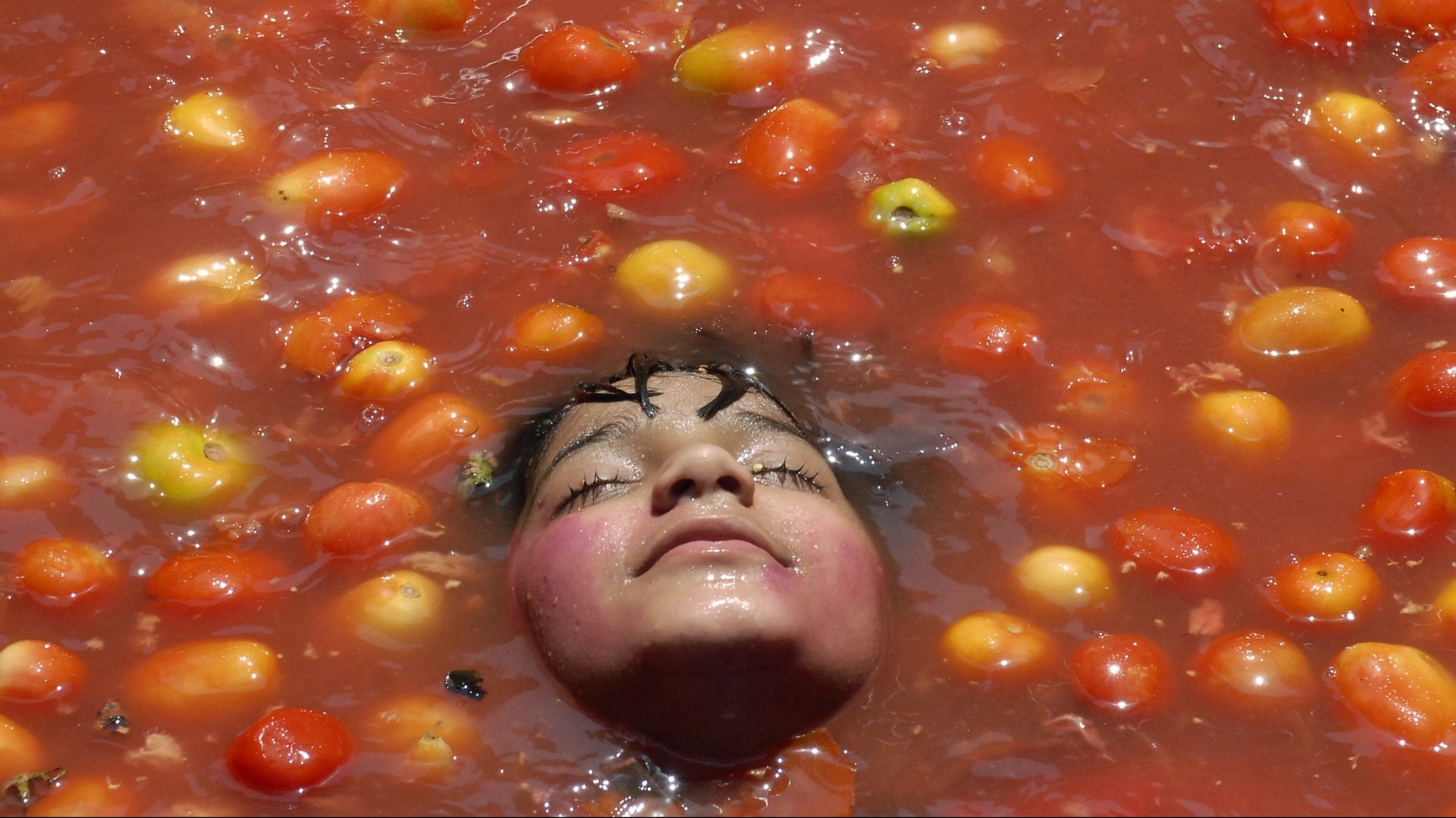India’s inflation is no longer only about fuel prices
The persistent rise in global crude oil prices has now spilled over into daily essentials like tomatoes, milk, and edible oils in India. The omicron variant of coronavirus may worsen the condition.


The persistent rise in global crude oil prices has now spilled over into daily essentials like tomatoes, milk, and edible oils in India. The omicron variant of coronavirus may worsen the condition.
A few months ago, petrol prices surged beyond 100 rupees ($1.33) a litre, singeing households in various Indian states. The government stepped in only last month, slashing indirect tax on fuel, though prices still remain high.
A surge in vegetable prices lifted retail inflation to 4.48% in October, from 4.35% a month ago. The food index, which makes up for about 39% of the inflation number, rose by 2.6% sequentially. On the whole, food inflation increased 0.85% year-on-year in October.
While the retail inflation has moderated due to favourable base effect in recent months, the cost of fuel, raw materials, and food items could push consumer prices towards 6.2% by the end of this financial year, according to Madhavi Arora, lead economist of Emkay Global Financial Services.
Base effects refer to the impact of comparing current price levels in a given month against price levels in the same month a year ago. Since a collapse in demand led to falling prices in 2020, the base effects may have contributed to the high inflation prints this year.
Meanwhile, wholesale price inflation jumped to a five-month high of 12.54% in October as raw material prices accelerated. With an expected recovery in demand, the higher costs are likely to be passed on to consumers, further raising retail inflation, analysts said.
Why are vegetable prices rising?
In recent weeks, tomato has been competing with petrol in terms of prices.
An inseparable ingredient in Indian dishes, it is selling at Rs80 per kilogram in retail in most cities. Prices have even shot up to Rs120 in a few southern states due to heavy rains and supply disruptions. In fact, a survey by LocalCircles showed over 44% of households were paying more than Rs60 for it and the average price was hovering around Rs75.
While prices are expected to cool off in the next few weeks, analysts warn against complacency.
Potato, another Indian staple, is also burning holes. This is because fields in Uttar Pradesh, the country’s largest producer-state, accounting for 30% of India’s annual potato output, have been water-logged, rating agency Crisil said in a research report.
“Net-net, any respite in vegetable prices in the short-term will be a function of how it pours from here. Hopefully, as the north-east monsoon beats a retreat, the worst may be over,” said Hetal Gandhi, director at Crisil.
Besides, rising fuel prices have added to transportation costs.
Pointing to early November data, Aditi Nayar, the chief economist at credit rating agency ICRA, said a continued rise in vegetable prices may weigh against a seasonal moderation in the food index.
Further, the threat to economic growth from omicron adds to the price pressures. Inflation is seen closing in on the upper limit of RBI’s 2%-6% range, now that the favourable base effect may cool off.
What is expected from the RBI?
Most central banks were considering hiking interest rates to tackle consumer prices until omicron surfaced two weeks ago.
Now, however, the RBI is expected to maintain support to the economy in its monetary policy today (Dec. 8). The chances of even a higher reverse repurchase rate—at which the central bank borrows from banks—are also slim, analysts said.
“The world is waiting for more data to understand the potential impact and efficacy of the existing vaccines against the omicron variant,” Kunal Kundu, an economist with Societe Generale GSC, told Bloomberg. “If RBI, too, perceives it as a threat to the nascent recovery, it may want to put on hold plans for policy normalisation.”
In its October meeting, the RBI had projected retail inflation at 5.3% for the ongoing financial year.